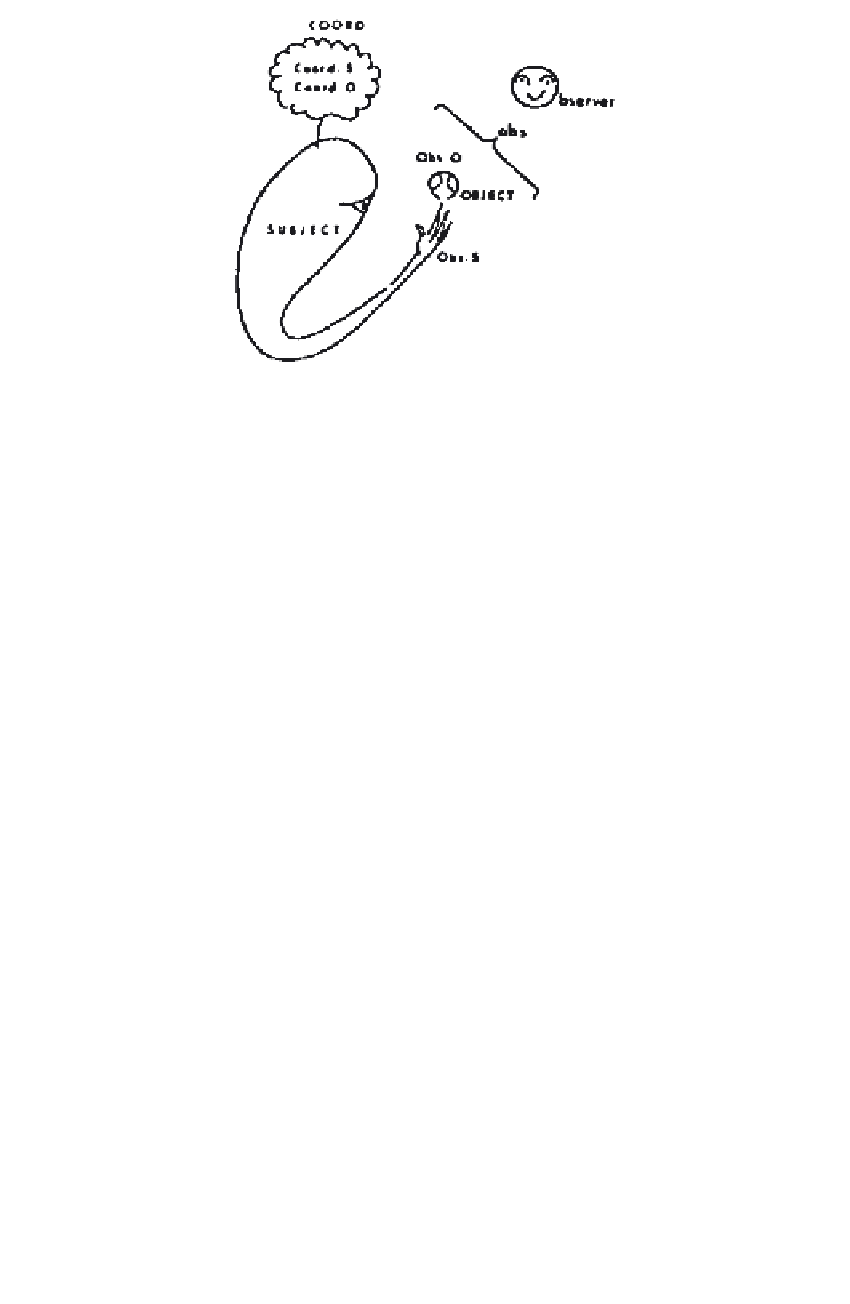Information Technology Reference
In-Depth Information
FIGURE 1.
Obs.S “observables relatifs a l'action du sujet”
Obs.O “observables relatifs aux objets”
Coord.S “coordinations inferentielles des actions (ou operations) du
sujet”
Coord.O “coordinations inferentielles entre objets”
“etc.” “the (syntactic) injunction to iterate (with no limits specified)
the sequence of these operations (HVF)”
For the sake of brevity (lucidity?) I propose to compress the symbolism
of before even further, compounding all that is observed (i.e. Obs.O and
Obs.S) into a single variable
obs,
and compounding coordinating operations that are performed by the
subject (i.e. Coord.S and Coord.O) into a single operator
COORD.
COORD transforms, rearranges, modifies etc., the forms, arrangements,
behaviors, etc., observed at one occasion (say, initially obs
o
, and call it the
“primary argument”) into those observed at the next occasion, obs
1
.
Express the outcome of this operation through the equality:
1
1
By replacing the arrow “Æ”, whose operational meaning is essentially to indicate
a one-way (semantic) connectedness (e.g., “goes to,” “implies,” “invokes,” leads to,”
etc.) between adjacent expressions, with the equality sign provides the basis for a
calculus. However, in order that legitimate use of this sign can be made, the vari-
ables “obs
1
” must belong to the same domain. The choice of domain is, of course
left to the observer who may wish to express his observations in form of, for instance,
numerical values, of vectors representing arrangements or geometrical configura-
tions, or his observations of behaviors in form of mathematical functions (e.g.,
“equations of motion,” etc.), or by logical propositions (e.g., McCulloch-Pitts”
“TPE's” 1943 (i.e., Temporal Propositional Expressions), etc.).

Search WWH ::

Custom Search